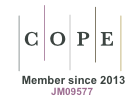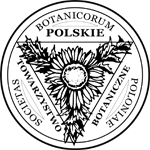Impact of effective microorganisms on weed infestation and yield of peppermint cultivated on muck-peat soil
Abstract
Keywords
Full Text:
PDFReferences
Higa T. Effective microorganisms: a biotechnology for mankind. In: Parr JF, Hornick SB, Whitman SE, editors. Proceedings of the 1st International Conference on Kyusei Nature Farming. Washington, DC: USDA; 1991. p. 8–14.
Higa T, Wididana GN. The concept and theories of effective microorganisms. In: Parr JF, Hornick SB, Whitman SE, editors. Proceedings of the 1st International Conference on Kyusei Nature Farming. Washington, DC: USDA; 1991. p. 118–124.
Higa T. Kyusei nature farming and environmental management through effective microorganisms – the past, present and future [Internet]. 2012 [cited 2018 Dec 18]. Available from: http://www.infrc.or.jp/english/KNF_Data_Base_Web/7th_Conf_KP_2.html
Higa T, Parr JF. Beneficial and effective microorganisms for a sustainable agriculture and environment. Atami: International Nature Farming Research Center; 1994.
Olle M, Williams IH. Effective microorganisms and their influence on vegetable production – a review. J Hortic Sci Biotechnol. 2013;88(4):380–386. https://doi.org/10.1080/14620316.2013.11512979
Cóndor A, González P, Lakre C. Effective microorganisms: myth or reality? Rev Peru Biol. 2007;14(2):315–319.
Muthaura C, Musyimi DM, Ogur JA, Okello SV. Effective microorganisms and their influence on growth and yield of pigweed (Amaranthus dubians). J Agric Biol Sci. 2010;5(1):17–22.
Wolna-Maruwka A, Mocek-Płóciniak A, Schroeter-Zakrzewska A, Niewiadomska A, Piechota T, Swędrzyńska D, et al. The influence of a microbial inoculum on the enzymatic activity of peat and morphological features of the French marigold. Nauka Przyroda Technologie. 2015;9(4):47. https://doi.org/10.17306/J.NPT.2015.4.47
Frąszczak B, Kleiber T, Klama J. Impact of effective microorganisms on yields and nutrition of sweet basil (Ocimum basilicum L.) and microbiological properties of the substrate. Afr J Agric Res. 2012;7(43):5756–5765. https://doi.org/10.5897/AJAR12.145
Filipović V, Cvijanović G, Ugrenović V, Aćimović M, Popović V, Radanović D, et al. Use of effective micro-organisms to enhance the productivity and quality of dry biomass of the basil cultivar ‘Sitnolisni aromatični’. In: Proceedings of the 7th International Scientific Agriculture Symposium “Agrosym 2016”; 2016 Oct 6–9; Jahorina, Bosnia and Herzegovina. East Sarajevo: Faculty of Agriculture, University of East Sarajevo; 2016. p. 1085–1091.
Karkanis A, Lycas C, Liava V, Bezou A, Petropoulos S, Tsiropoulos N. Weed interference with peppermint (Mentha ×piperita L.) and spearmint (Mentha spicata L.) crops under different herbicide treatments: effects on biomass and essential oil yield. J Sci Food Agric. 2017;98:43–50. https://doi.org/10.1002/jsfa.8435
Kennedy AC, Kremer RJ. Microorganisms in weed control strategies. Journal of Production Agriculture. 1996;9(4):480–485. https://doi.org/10.2134/jpa1996.0480
Marambe B, Sangakkara UR. Effect of EM on weed populations, weed growth and tomato production in Kyusei nature farming [Internet]. 1996 [cited 2018 Dec 18]. Available from: http://www.futuretechtoday.net/em/EMWeeds&Tomato.pdf
FAOSTAT. Data on peppermint yield and production [Internet]. 2016 [cited 2018 Dec 18]. Available from: http://www.fao.org/faostat/en/#data/QC
Newerli-Guz J. Uprawa roślin zielarskich w Polsce. Roczniki Naukowe Stowarzyszenia Ekonomistów Rolnictwa i Agrobiznesu. 2016;18(3):268–274.
Najda A. Zmienność ontogenetyczna mięty (Mentha species) czynnikiem warunkującym zawartość składników bioaktywnych w surowcu. Lublin: Wydawnictwo Uniwersytetu Przyrodniczego; 2017. (Rozprawy Naukowe Uniwersytetu Przyrodniczego w Lublinie; vol 387).
Kołodziej B. Mięta pieprzowa. In: Kołodziej B, editor. Uprawa ziół. Poznań: PWRiL; 2010. p. 299–307.
Rumpel J. Uprawa warzyw na glebach torfowych. Warszawa: PWRiL; 1979.
Borowy A, Kossowski M. Chemiczne zwalczanie chwastów w uprawie selera naciowego na glebie torfowej i mineralnej. Biuletyn Warzywny. 1979;23:245–258.
Polish Pharmacopoeia VI. Content of essential oil. Warsaw: Polskie Towarzystwo Farmaceutyczne; 2002.
Joulain D, Kőnig WA. The atlas of spectral data of sesquiterpene hydrocarbons. Hamburg: EB; 1998.
Najda A. Plonowanie i ocena fitochemiczna w różnych fazach wzrostu roślin dwu odmian selera naciowego (Apium graveolens L. var. dulce Mill./Pers.) [PhD thesis]. Lublin: AR; 2004.
Węglarz Z, Załęcki R. Poszukiwanie zależności pomiędzy terminem zbioru ziela mięty pieprzowej (Mentha piperita L.) a plonem i jakością surowca. Herba Polonica. 1985;31(3–4):175–180.
Rosłon W, Osińska E, Bączek K, Węglarz Z. The influence of organic-mineral fertilizers on yield and row materials quality of chosen plants of the Lamiaceae family from organic cultivation. Acta Scientiarum Polonorum, Hortorum Cultus. 2011;10(1):147–158.
Zheljazkov VD, Cantrell CL, Astatkie T, Hristov A. Yield, content, and composition of peppermint and spearmints as a function of harvesting time and drying. J Agric Food Chem. 2010;58:11400–11407. https://doi.org/10.1021/jf1022077
Pourhadi M, Badi HN, Mehrafarin A, Omidi H, Hajiaghaee R. Phytochemical and growth responses of Mentha piperita to foliar application of biostimulants under greenhouse and field conditions. Herba Polonica. 2018;64(2):1–12. https://doi.org/10.2478/hepo-2018-0010
Lafmejani ZN, Jafari AA, Moradi P, Moghadam AL. Impact of foliar application of copper sulphate and copper nanoparticles on some morpho-physiological traits and essential oil composition of peppermint (Mentha piperita L.). Herba Polonica. 2018;64(2):13–24. https://doi.org/10.2478/hepo-2018-0006
DOI: https://doi.org/10.5586/aa.1755
|
|
|






